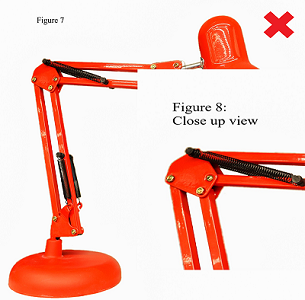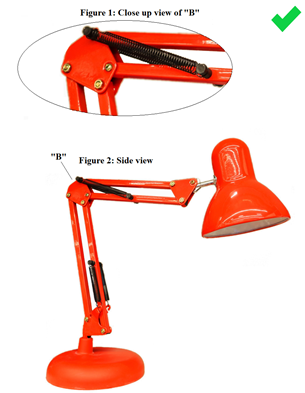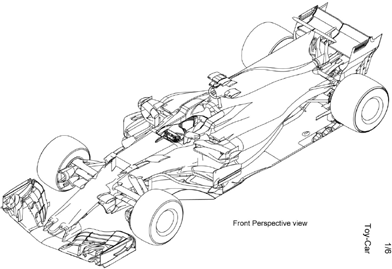- Home
- Introduction
- 1. Design rights
- 1.1. Design rights: overview
- 1.2. What a design right protects
- 1.3. Why protect a design?
- 1.4. How designs are protected in Australia?
- 2. Application for registration
- 2.1. Application for registration: overview
- 2.2. Registration process
- 2.3. Submitting an application
- 2.4. Minimum filing requirements
- 2.5. Who is entitled to be a registered owner?
- 2.6. Types of applications (s 22)
- 2.7. Request for registration
- 2.8. Further designs
- 3. Fees
- 3.1. Fees: overview
- 3.2. Application fees
- 3.3. Renewal fees
- 3.4. Examination fees
- 3.5. Hearing fees
- 3.6. Fees for extensions of time
- 3.7. Refunds
- Production test Designs
- 4. Formalities assessment
- 4.1. Formalities assessment: overview
- 4.2. The ‘Formalities check’ and ‘Formal requirements’
- 4.3. Formalities notices
- 5. Applicant details
- 5.1. Applicant name: overview
- 5.1.1. Is the applicant a person?
- 5.1.2. Individual (Australian and overseas, including joint owners)
- 5.1.3. Australian company (Pty Ltd, Ltd)
- 5.1.4. Strata company, owners corporation, body corporate etc
- 5.1.5. Government entity
- 5.1.6. Incorporated association
- 5.1.7. Overseas entity (AG, S.r.L etc)
- 5.1.8. Several applicant names, multiple designs
- 5.1.9. Joint owner names with ABN
- 5.1.10. Partnership
- 5.1.11. Trust/trustee
- 5.1.12. Business names and 'trading as'
- 5.1.13. Applicant name and design owner
- 5.2. Applicant address
- 6. Representations
- 6.1. Representations: overview
- 6.2. General requirements
- 6.3. Formal compliance
- 6.4. Product
- 6.5. Consistency
- 6.6. Text
- 6.7. Common designs
- 6.8. Drawings
- 6.9. Photographs
- 6.10. Specimens or 3D models
- 6.11. Different views
- 6.12. Environmental views
- 6.13 Pairs and mirror images
- 7. Classification
- 7.1. Classification: overview
- 7.2. Classification systems
- 7.3. Finding the right class
- 7.4. Cases of doubt
- 7.5. More than one possible classification
- 7.6. Multiple products or designs
- 8. Examination and certification
- 8.1. Examination and certification: overview
- 8.2. Examination and certification processes
- 8.3. Requesting examination
- 8.4. Third party initiated examinations
- 8.5. Concurrent requests for examination
- 8.6. Expedited examination
- 8.7. Material provided by a third party
- 8.8. Relevant material that must be considered
- 8.9. Time frame for completion of examination and last-minute responses
- 8.10. Withdrawal of request for examination
- 8.11. Notice of intention to certify
- 8.12. Requests for examination after certification
- 8.13. Further examination reports
- 8.14. Revocation
- 8.15. Examination hearings
- 8.16. Examination on Registrar's initiative
- 9. Identifying the design
- 9.1. Identifying the design: overview
- 9.2. Overall appearance
- 9.3. Visual features
- 9.4. Variable visual features
- 9.5. What cannot be a visual feature
- 10. Product
- 10.1. Product: overview
- 10.2. Identifying the product
- 10.3. Things that are not products
- 10.4. Things that are not different products
- 10.5. Product name
- 10.6. Manufactured or handmade
- 10.7. Component part of a complex product
- 10.8. Assembled set or kit
- 10.9. Indefinite dimensions
- 10.10. Examples - things that are / are not products
- 11. Excluded designs
- 11.1. Excluded designs: overview
- 11.2. Priority date of excluded designs
- 11.3. Extensions of time
- 11.4. Amendments
- 11.5. Registration/publication requests
- 12. Section 43 refusal to register
- 12.1. Section 43 refusal to register: overview
- 12.2. Medals
- 12.3. Anzac
- 12.4. Currency
- 12.5. Scandalous content
- 12.6. Arms, flags, emblems etc.
- 12.7. Olympic symbols
- 12.8. Integrated circuits
- 13. Assessing newness and distinctiveness
- 13.1. Assessing newness and distinctiveness: overview
- 13.2. Product name and intended use
- 13.3. Identifying the product
- 13.4. Test for newness
- 13.5. Test for distinctiveness
- 13.6. Substantially similar in overall impression
- 13.7. How the design is displayed
- 13.8. Other visual features
- 13.9. Searching
- 14. Section 19 requirements for distinctiveness
- 14.1. Section 19 requirements for distinctiveness: overview
- 14.2. Similarities and differences
- 14.3. State of development of the prior art base
- 14.4. Statement of newness and distinctiveness
- 14.5. Amount, quality and importance
- 14.6. Freedom of the creator of the design to innovate
- 14.7. Familiar person / Informed user
- 15. Statement of newness and distinctiveness
- 15.1. Statement of newness and distinctiveness: overview
- 15.2. Formalities assessment of the SoND
- 15.3. Amendments to the SoND
- 15.4. Using the SoND to assess distinctiveness
- 16. Standard of the familiar person / informed user
- 16.1. Standard of the familiar person / informed user: overview
- 16.2. Identifying the familiar person / informed user
- 16.3. Declarations about the familiar person / informed user
- 16.4. Familiarity with the product
- 16.5. References to European and UK decisions
- 16.6. Familiar person’s / informed user’s knowledge base versus prior art base
- 17. Prior art base
- 17.1. Prior art base: overview
- 17.2 Publicly used in Australia
- 17.3. Published in a document within or outside of Australia
- 17.4. Trade marks and patents as citations
- 17.5. Establishing the publication date
- 17.6. Designs disclosed in applications
- 18. Prior publication or use exceptions
- 18.1. Prior publication or use exceptions: overview
- 18.2. Exhibitions
- 18.3. Unauthorised disclosures
- 18.4. Disclosure to government
- 18.5. Copyright
- 18.6. Grace Period
- Annex A - An example of a grace period declaration
- 19. Priority date
- 19.1. Priority date: overview
- 19.2. Convention application
- 19.3. Multiple bases for priority
- 19.4. Plural designs
- 19.5. When priority must be asserted
- 19.6. Excluded designs
- 19.7. Converted applications
- 19.8. Applications by an entitled person
- 20. Convention priority
- 20.1. Convention priority: overview
- 20.2. Convention countries
- 20.3. Time limit to claim convention priority
- 20.4. Assessing convention priority claims
- 20.5. Convention priority for excluded designs and applications that include more than one design
- 20.6. Basic application
- 20.7. Requesting the basic application
- 20.8. Relevance of the basic application to examination
- 21. Satisfied
- 21.1. Satisfied: overview
- 21.2. Meaning of ‘satisfied’
- 21.3. ‘Satisfied’ as to prior art base
- 21.4. Reasonable doubt, balance of probabilities and uncertainty
- 21.5. ‘Not satisfied’
- 22. Amendments
- 22.1. Amendments: overview
- 22.2. Amending an application
- 22.3. Amending a registration
- 22.4. Inclusion of matter not in substance disclosed
- 22.5. Increasing the scope of the design registration
- 22.6. Other types of amendments
- 23. Extensions of time
- 23.1. Extensions of time: overview
- 23.2. Legal principles
- 23.3. Error or omission by the Registrar
- 23.4. Error or omission by the customer
- 23.5. Circumstances beyond the customer’s control
- 23.6. Registrar’s discretion
- 23.7. Protection for third parties
- 23.8. Period of extension
- 23.9. Extensions process
- 23.10. Advertisement
- 23.11. Request from an unrecorded new owner
- 23.12. Extension of the convention priority period
- 24. Assignments (and other interests)
- 24.1. Assignments and other interests: overview
- 24.2. Recording changes of ownership
- 24.3. Possible complications
- 24.4. Bankruptcy and winding up
- 24.5. Registering other interests
- 25. Ownership disputes
- 25.1. Ownership disputes: overview
- 25.2. Disputes between joint applicants
- 25.3. Disputes where a non-applicant claims ownership
- 25.4. Disputes where some designs have been registered or published
- 25.5. Disputes about recording a change of ownership before registration
- 25.6. Typical situations where ownership disputes arise
- 25.7. Revocation after an ownership dispute
- 26. Production of documents under s 61(1)
- 26.1. Production of documents under s 61(1): overview
- 26.2. Powers of the courts
- 26.3. Powers of the Registrar
- 26.4. Precedent
- 26.5. Who access is granted to
- 26.6. Access in ownership disputes
- 26.7. Where inspection can take place
- 26.8. Right of lien
- 26.9. Draft undertaking for access
- 27. Publication and file access
- 27.1. Publication and file access: overview
- 27.2. Designs not publicly available
- 27.3. Legal exceptions
- 27.4. Freedom of information
- 27.5. Prohibition orders
- 28. Hearings
- 28.1. Hearings: overview
- 28.2. Filing evidence
- 28.3. Disputes over whether the design was new and distinctive at the priority date
- 28.4. Interface with court proceedings
- 29. Glossary
- 30. Citation index
- 31. Keyword index
- 32. Classification listings
- Class Heading Summary
- Class 01 Foodstuffs
- Class 02 Articles of clothing and haberdashery
- Class 03 Travel goods, cases, parasols and personal belongings not elsewhere specified
- Class 04 Brushware
- Class 05 Textile piecegoods, artificial and natural sheet material
- Class 06 Furnishing
- Class 07 Household goods not elsewhere specified
- Class 08 Tools and hardware
- Class 09 Packages and containers for the transport or handling of goods
- Class 10 Clocks and watches and other measuring instruments, checking and signalling instruments
- Class 11 Articles of adornment
- Class 12 Means of transport or hoisting
- Class 13 Equipment for production, distribution or transformation of energy
- Class 14 Recording, communication or information retrieval equipment
- Class 15 Machines not elsewhere specified
- Class 16 Photographic, cameras, cinematographic and optical apparatus
- Class 17 Musical instruments
- Class 18 Printing and office machinery
- Class 19 Stationery and office equipment, artists and teaching materials
- Class 20 Sales and advertising equipment, signs
- Class 21 Games, toys, tents and sporting goods
- Class 22 Arms, pyrotechnic articles, articles for hunting, fishing and pest killing
- Class 23 Fluid distribution equipment, sanitary, heating, ventilation and air conditioning equipment, solid fuel
- Class 24 Medical and laboratory equipment
- Class 25 Building units and construction elements
- Class 26 Lighting apparatus
- Class 27 Tobacco and smokers supplies
- Class 28 Pharmaceutical and cosmetic products, toilet articles and apparatus
- Class 29 Devices and equipment against fire hazards, for accident prevention and rescue
- Class 30 Articles for the care and handling of animals
- Class 31 Machines and appliances for preparing food or drink, not elsewhere specified
- Class 32 Graphic symbols and logos, surface patterns, ornamentation
- 33. Designs (Formal Requirements for Designs Documents) Instrument 2022
6.2. Representations: General requirements
Representations must:
- clearly show the visual features
- show the design as applied to the relevant product
- in at least one view it should show the product fully assembled and unexploded.
- show an accurate and complete picture of the design of the product. This includes clearly showing the visual features of the design.
Representations can be drawings, tracings, specimens, photographs or digital images. Typically, we receive photographs, line drawings or computer-aided design (CAD) drawings.
An application can include any number of representations. However, the set of representations must provide enough visual information to fully display the design. Where a product comprises of multiple elements, the representations need to include a view where these elements are physically connected or joined.
If a statement of newness and distinctiveness (SoND) refers to a particular part of a design, at least one of the representations should display that part of the design
At least one of the views in the representations should display the product fully assembled in an unexploded form, without extraneous matter.
Standard of accuracy and completeness
Representations must give an accurate and complete picture of the design of a product. However, they are not the design itself. The visual features of a design may be less (or more) obvious in the representations than in the actual product. As long as the drawing/photo clearly shows the visual features of the design – no matter how obvious they are compared with the real-life product – it is an acceptable representation.
Consistency
All the representations for an application should be in the same format – i.e. all photographs, all line drawings or all CAD. Combining line drawings with other filing formats such as photographs or CAD as part of a single design filing almost always shows inconsistency in representations.
Where there is inconsistency, we will issue a formalities notice
Stylistic elements
There are no mandatory rules for using (or interpreting) stylistic elements in the representations – e.g. different drawing techniques. However, there is a strong presumption that when elements are represented in a different manner, it is for a purpose.
A common drafting style is to show some features in solid lines and others in broken (dashed or dotted) lines. Broken lines are frequently used to indicate things such as:
- generic features of the product (not the key visual features that are the focus of the new and distinctive design). Features required for the product to be the product
- hidden elements
- features that establish an environmental context
- features outside the scope of the design (such as the store dummy in Review 2 v Redberry Enterprises).
In all instances, the examiner needs to interpret the representations in the context of the design as a whole, and make this assessment in the context of the standard of the familiar person / informed user.
- Always assume that a different drafting style has been included to make a point
- If in doubt, use the other parts of the application (e.g. product name or statement of newness and distinctiveness) to help you understand what the difference means.
Separation
The representations must be on different pages from any other documents in the application and must meet the following requirements for page layout.
No overlap
If there is more than one representation on a single page, the images cannot overlap.
Example
Product name: Lamp
Representations:

Not acceptable because one representation obscures part of the other.

Acceptable because both representations are fully visible.
One design per page for multiple products or a common design
If the application is for multiple products or a common design, the representations of each product must be on a separate page and clearly labelled. There cannot be more than one design per page. The exception being for applications filed on or after 10 March 2022, where a common design is applied for, and a single representation is used to show the identical design applied to more than one product.
Example (Design 202014214)
Product name: Car; Toy car
Representations:


This example above shows two designs on a single page and is not acceptable for applications filed because it shows two different products (more than one product) with a common design on the same page. The labelling (identifying the product name for each representation) is also very difficult to see. Each product must be on a separate page and include clear labelling.
Unclear representations
Sometimes it is difficult to be sure from the representations exactly what the design is – either what the product is (e.g. because it is very complex) or what the visual features of the design are (because of unclear drafting). The use of line drawings must consist of clear and well-defined linework.
At the formalities stage
We can refuse to register a design on the basis that the representations are not substantially compliant with schedule 2 for applications made before 10 March 2022; or do not substantially comply with the Designs Formal Requirements Instrument for applications made on or after 10 March 2022. We can also refuse to register on the basis that they are unclear. Lack of clarity can suggest that there are further designs that should be separately applied for.
At the formalities stage we should therefore ensure that representations are clear before registering and that they match the number of designs that have been applied and paid for.
At examination
The examiner needs to interpret the representations as best they can. If the representations are open to be construed in a way that is consistent with relevant prior art, an objection should be raised. The examiner can:
- interpret the design broadly
- develop a search strategy based on that broad scope (whilst focusing on finding citations in the most efficient and effective way)
- make a file note about how they have interpreted the design
- if the examination results in an adverse report, indicate how they have interpreted the design. This will be part of the reasoning as to why they have raised a ground for revocation.
Criteria for acceptability
We need to consider the following points when determining whether the representations are acceptable. For details on each point, see the linked page.
- Product: the representations must show the whole of the product named in the application.
- Consistency: they must be consistent with each other and with the rest of the application.
- Text: only essential text is acceptable.
- Common designs: for a common design they must show
- each product
- sufficient commonality of the visual features to be regarded as the same design.
- Format: they must meet specific standards for drawings, photographs and specimens or 3D models.
- Different views: as long as at least one representation clearly shows the whole design, the set of representations can include partial views such as close-ups.
- Environmental and References views: the application can include this type of view showing the design in context.
Views of parts mentioned in a statement of newness and distinctiveness
Where a design has a statement of newness and distinctiveness, those parts of the design should appear in at least one of the representations. Note that any amendments to the representations in response to this issue must comply with s 28 of the Act.
Amended Reasons
| Amended Reason | Date Amended |
|---|---|
Accessibility fix - remove empty headings |
|
Minor correction. |
|
Formal Requirements Instrument changes |
